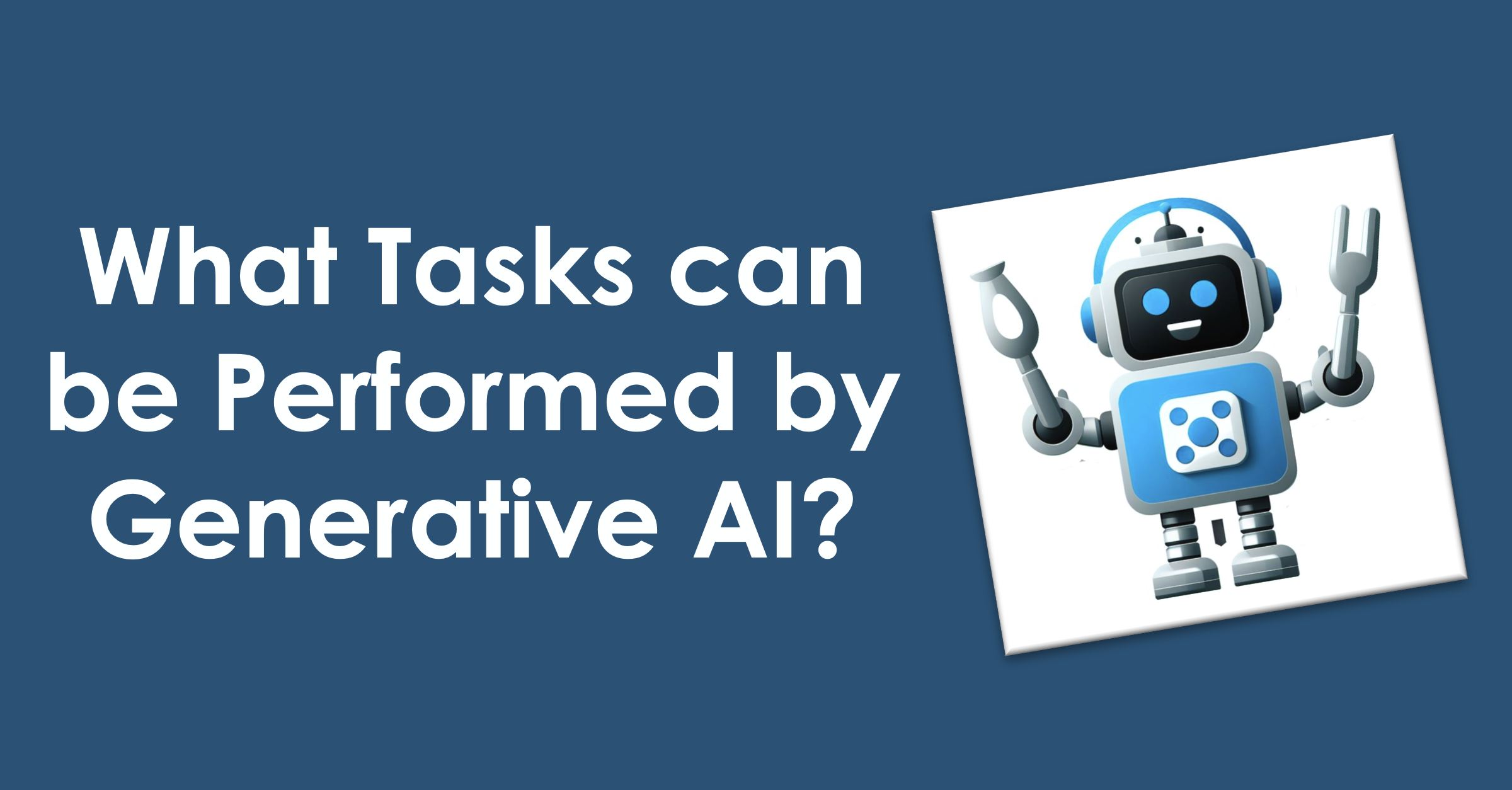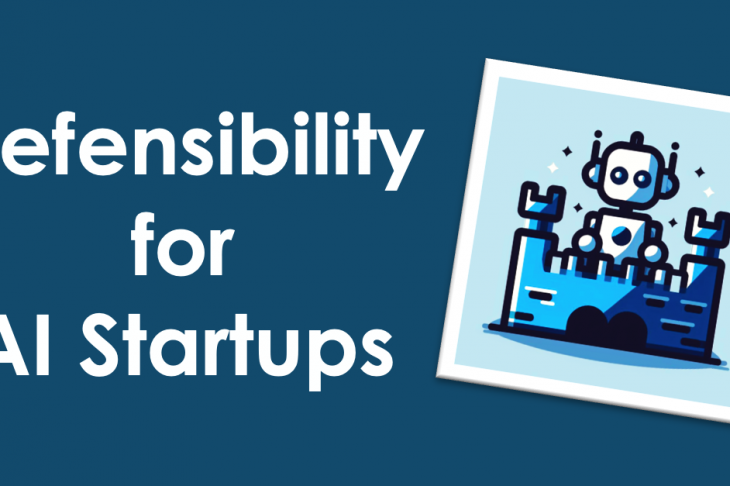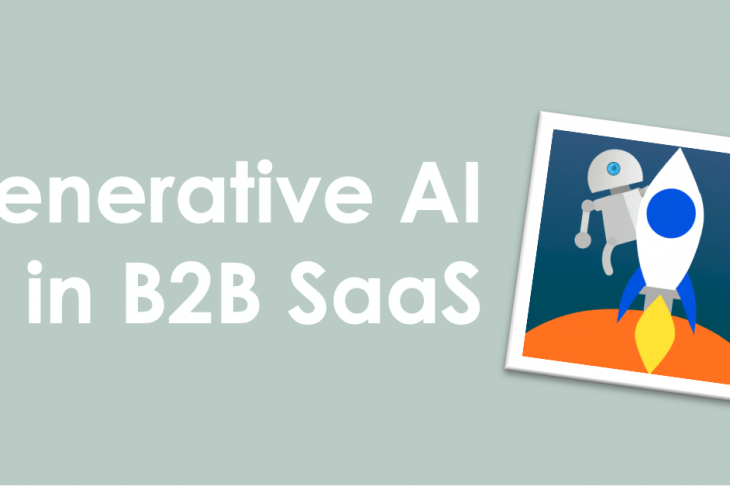
AI-powered: What Tasks can be Performed by Generative AI?
In a previous post, I discussed how Generative AI serves as an incredible new addition to your SaaS toolbox, enabling you to optimize and automate core workflows. But what concrete capabilities does Generative AI offer?
This post serves as my personal checklist outlining the tasks that Generative AI can potentially assist with within the context of a SaaS platform. It’ll primarily focus on its capabilities in language and text processing:
- Text Summarization (e.g., create executive summaries)
- Text Classification (e.g., is this customer case a feature request or a bug report)
- Sentiment Analysis (e.g., positive or negative views)
- Emotion Detection (e.g., is your customer surprised, joyful, or angry?)
- Text Tagging (e.g., add hashtags)
- Text Translation (e.g., translate from French to English)
- Named-Entity Recognition (e.g., identify real-world people and places in text)
- Text Generation (e.g., for chatbots, automatic replies)
- Retrieval-Augmented Generation (e.g., use your own data with Generative AI)
- Text Similarity (e.g., for semantic search, more-like-this features)
- Question & Answering (e.g., for decision points, content moderation, evaluate ideas)
- Text Transformation (e.g., transform CSV to JSON, transform free-text to a structured format)
- Anomaly Detection (e.g., for quality control)
Remember, these capabilities can be like Legos – you can build impressive solutions by combining them! For instance, first translate all customer comments into a single language, such as English, then group similar comments together based on their topic, and finally summarize the key points of each group for speed reading.
Text Summarization
Turn lengthy documents into concise summaries. Generative AI can extract key points from customer support tickets, emails, contracts, and more, making information easier to read and understand.
- Example 1: Support agents can grasp customer issues faster with AI-generated summaries of requests.
- Example 2: Generate weekly executive summaries by condensing large volumes of customer messages into executive summaries.
- Example 3: Summarize all customer issues to identify common pain points and areas for improvement as input to the product development team.
Information overload is a real problem for many SaaS companies, because it leads to inefficiencies and bottlenecks in workflows. Summarization helps prioritize tasks, gain insights quickly, and make informed decisions.
Text Classification
Classify incoming text data into pre-defined classes. Generative AI can automatically classify incoming support tickets, emails, and other documents into classes or categories defined by you.
- Example 1: Classifying incoming support tickets according to difficulty level (easy, medium, hard) for efficient routing to first or second-line support and thereby enabling faster resolution.
- Example 2: Efficiently route support tickets by automatically classifying them by type (bug report, feature request, or question) and immediately assigning them to the appropriate team.
- Example 3: In a web directory, automatically add new websites to the appropriate categories.
This intelligent and automatic classification of text can accelerate decision-making and efficiency in SaaS workflows.
Sentiment Analysis
Understand the sentiment behind incoming text data. Generative AI can analyze emails, chat messages, social media posts, and other documents to determine whether they are positive, negative, or neutral:
- Example 1: Prioritize customer inquiries based on sentiment. Flag negative feedback for swift resolution.
- Example 2: Monitor sentiment shifts in customer chats during support interactions. Automatically escalate chats that turn negative to a manager.
- Example 3: Analyze sentiment in customer support tickets to identify areas for product improvement or highlight features customers love.
Sentiment analysis empowers businesses to gain insights into their customers’ feelings through automated analysis of text data. This allows for proactive customer service and data-driven decision-making within SaaS workflows, ultimately leading to improved customer experiences.
Emotion Detection
Gain a deeper understanding of customer sentiment with emotion detection. This advanced AI capability goes beyond basic sentiment analysis by pinpointing specific emotions in customer messages, emails, and social media posts. Emotion detection can reveal anger, disgust, fear, joy, sadness, or surprise.
- Example 1: A healthcare chatline can prioritize chats with extremely fearful patients, ensuring they receive prompt and empathetic care.
- Example 2: An e-commerce platform can use emotion detection to identify customers expressing joy about a new purchase, allowing for targeted upsell recommendations of complementary products (e.g., a new game for a joyful gamer).
- Example 3: A FinTech company might proactively reach out to customers expressing anger to understand their concerns and offer solutions, preventing potential churn and fostering stronger relationships.
Emotion detection empowers businesses to understand customer feelings on a deeper level. This valuable insight allows for personalized customer journeys (e.g., tailored product recommendations, empathetic support interactions) and improved interactions within SaaS workflows. By understanding specific emotions, businesses can provide more empathetic support, offer personalized product recommendations, and ultimately build stronger customer relationships.
Text Tagging
Automatically enrich text content with relevant labels. Text tagging goes beyond text classification by allowing Generative AI to automatically assign relevant keywords, labels, or tags to incoming text data. Unlike text classification, these tags are not predefined but are automatically generated by the AI based on the content.
- Example 1: Automatically add one or more tags to incoming customer messages (e.g., billing, technical issue, feature request). This allows support agents to quickly see which topics are covered and route inquiries efficiently.
- Example 2: Based on the tags on a customer message, show the support agent a list of other customer messages with the same tags (e.g., similar billing inquiries). This can help identify recurring issues and find solutions faster.
- Example 3: Social media platforms can automatically suggest relevant hashtags to users when composing posts. This helps users improve post discoverability and reach a wider audience.
Text tagging empowers businesses to organize and categorize large volumes of text content. This can significantly improve information discovery, organization, and analysis within SaaS workflows. For example, customer support agents can leverage tags to quickly find similar inquiries or identify emerging customer issues. When a new tag suddenly appears and grows in usage, it can signal a new trend or problem that needs attention.
Text Translation
Automatically translate text content across languages. Generative AI offers advanced text translation capabilities, enabling real-time, natural-sounding translations between a wide variety of languages. This allows businesses to bridge the communication gap and reach a global audience.
- Example 1: A multinational company can translate employee feedback surveys into a central language for analysis, fostering a more inclusive and informed decision-making process.
- Example 2: A global support center can offer 24/7 world-wide assistance by automatically translating incoming customer requests into the preferred language of the support agent.
- Example 3: An e-commerce platform can leverage text translation to showcase product descriptions and customer reviews in multiple languages, reaching a wider global audience and boosting international sales.
Text translation empowers businesses to achieve several key goals: increased customer satisfaction through multilingual support, improved brand recognition in international markets, and boosted business growth by reaching a global customer base and expanding sales opportunities.
Named-Entity Recognition
Automatically identify and classify named entities in text data. Named entities can include people, organizations, locations, products, events, dates, monetary values, etc. This allows Generative AI to extract key details and improve information organization.
- Example 1: An insurance company might automatically locate and identify any person names (e.g., policyholder, beneficiary) mentioned in incoming insurance claim reports and add them as involved parties in the case.
- Example 2: A customer service chat service might automatically identify what product or service (e.g., specific software, subscription plan) the request is about, so it can be routed to the appropriate team.
- Example 3: An AI startup might use named-entity recognition to remove personally identifiable information (e.g., names, addresses) from their dataset to ensure compliance with data privacy regulations.
Named-entity recognition empowers businesses to extract critical information from text data, automate data entry tasks (e.g., pre-populating forms), and enhance data analysis within SaaS workflows. This can lead to improved efficiency, streamlined workflows, and better decision-making.
Text Generation
This is a core capability of Generative AI: the ability to produce human-like text. Imagine creating chatbots like ChatGPT, but designed specifically for your SaaS company’s needs. These chatbots, powered by Generative AI, could answer customer questions, troubleshoot issues, and even schedule appointments – all fully automated.
- Example 1: Create chatbots that answer customer questions, troubleshoot common issues, and even schedule meetings – all without human intervention. This frees up your support team to focus on more complex customer inquiries.
- Example 2: In a support chat, leverage Generative AI to suggest the next reply in the conversation with the customer. The support agent can then review and edit the suggestion before sending it. This allows for faster and more efficient customer service interactions while still maintaining a human touch.
- Example 3: A social media tool can use Generative AI to automatically create draft social media posts (e.g., Tweets, LinkedIn posts) to promote a new blog post. These draft posts can include catchy headlines and engaging descriptions, saving social media managers time and allowing them to experiment with different creative approaches.
By leveraging text generation, SaaS companies can increase efficiency by automating tasks, improve customer engagement through personalized content, and speed up their core workflows.
Retrieval-Augmented Generation (RAG)
Boost the power of Generative AI with real-world data. Retrieval-Augmented Generation (RAG) allows you to integrate your own data sources with Generative AI models. This empowers these models to access and leverage the most up-to-date and relevant information for specific tasks.
- Example 1: A customer service chatbot can be augmented with your internal knowledge base (e.g., support policies, FAQs) to answer customer questions directly rather than relying solely on its general training data. This ensures responses are accurate and based on your specific policies.
- Example 2: A news platform can leverage RAG to incorporate live news feeds into its AI models, delivering up-to-the-minute summaries of current events.
- Example 3: A sophisticated customer service chatbot can first search an internal knowledge base for an article that closely matches the customer’s query and then use this article when answering the customer’s request.
The ability to integrate your company’s data with Generative AI is a game-changer. By combining these technologies, you can benefit from the freshness of external data while still enjoying the many advantages of Generative AI. This allows for more accurate, up-to-date, and relevant responses tailored to the specific needs of the business.
Text Similarity
Text similarity measures how similar two pieces of text are in semantic meaning. This powerful capability can help SaaS companies organize information and improve user experiences.
- Example 1: Text similarity can power internal search functions, returning relevant documents even if a user’s query doesn’t match the exact keywords, and rank the documents in order of closeness to the user’s query. This can improve the effectiveness of internal knowledge bases and help users find the information they need faster.
- Example 2: Group large collections of documents into thematic categories based on their content similarity. This makes it easier for users to browse and find the information they need.
- Example 3: On an internal support site, text similarity can identify “Related Support Cases” based on semantic similarity. This allows users to find solutions to similar problems without needing to search through countless articles.
By leveraging text similarity, SaaS companies can improve user experience, streamline workflows, and reduce the time spent searching for relevant information.
Question & Answering (Q&A)
Generative AI empowers machines to understand and answer your questions in natural language, just like you would ask a colleague. This allows businesses to automate decision-making processes within workflows and tackle complex tasks that traditional programming struggles with.
- Example 1: Automate decision points within workflows using Q&A. Imagine a customer support workflow where Generative AI can analyze a support ticket and answer a question like “Is this an angry customer complaint?” Based on the answer (yes/no), the ticket can be automatically routed to the appropriate support tier (second level for escalated issues, first level for regular inquiries). This not only increases efficiency but also improves customer satisfaction by ensuring faster resolution times.
- Example 2: Ensure the quality and suitability of user-generated content with Generative AI. You can leverage Q&A to automatically evaluate content and answer questions like “Is this content appropriate for all audiences?”. This allows for faster moderation and identification of potentially harmful content.
- Example 3: A company has crowd-sourced ideas for a new product and asks Generative AI to perform the first evaluation of the incoming ideas and answer questions like “Does this idea align with our product goals?” This initial evaluation helps prioritize high-potential ideas and saves human resources for in-depth analysis.
Q&A empowers businesses to automate decision points in workflows, improve information retrieval, and streamline data processing, leading to increased efficiency and productivity. This allows human experts to focus on higher-level tasks and strategic decision-making.
Text Transformation
Generative AI automates the process of transforming text data from one format to another. This empowers businesses to seamlessly integrate data from various sources, regardless of format, and unlock its full potential within workflows.
- Example 1: A marketing automation platform can leverage text transformation to ingest customer data from various sources (e.g., CRMs, social media platforms), which might be in different formats (CSV, vCard, etc.). The Generative AI system can automatically convert this data into a unified format, enabling streamlined segmentation and targeted marketing campaigns.
- Example 2: A healthcare provider can utilize text transformation to process patient data from disparate sources. For example, converting doctor’s notes into a structured format allows for easier analysis and integration with electronic health records, improving patient care coordination.
- Example 3: A company receives unreliable data from a live source and can then use Generative AI to clean and standardize the format before it’s processed further, ensuring data quality and improving downstream workflows.
Text transformation empowers businesses to unify data from various sources, streamline data processing workflows, and unlock deeper insights from their data, leading to improved decision-making and better business outcomes. This allows businesses to leverage the full potential of their data and gain a competitive edge.
Anomaly Detection
Proactively identify data issues with anomaly detection. Generative AI excels at recognizing patterns within data. This capability allows businesses to leverage anomaly detection to identify unexpected variations or outliers within datasets. This can be instrumental in proactive quality control, flagging potential issues before they impact downstream processes.
- Example 1: A multilingual marketing agency can leverage anomaly detection to ensure the quality of translated marketing materials. The Generative AI system can analyze translated text for inconsistencies or deviations from the original source content, flagging potential errors for human review before campaign launch.
- Example 2: An e-commerce platform can utilize anomaly detection to identify irregularities in product data feeds from suppliers. The Generative AI system can compare new data against historical data, detecting outliers such as uncommon words or missing product descriptions, preventing inaccurate product information from being displayed on the platform.
- Example 3: A company receives a spreadsheet with a million user records that needs to be uploaded to their SaaS platform. Before uploading, Generative AI can check for anomalies within the data, highlighting outliers or inconsistencies that require manual review before upload, ensuring data integrity.
Anomaly detection empowers businesses to proactively identify and address data quality issues, minimize errors, and improve the overall reliability of their data. This leads to better decision-making and reduced operational costs. By proactively addressing data anomalies, businesses can ensure the smooth operation of their workflows and gain a significant competitive advantage.
—ooo—
This glimpse into Generative AI’s capabilities is just a starting point. As this technology continues to evolve, it has the potential to revolutionize various industries and workflows. While it’s important to acknowledge that Generative AI, like any powerful tool, has limitations, it can also generate inaccurate or misleading information at times. As the technology matures, researchers are addressing these challenges. We are only scratching the surface of what Generative AI can do, and the possibilities are truly exciting for the future 🚀

